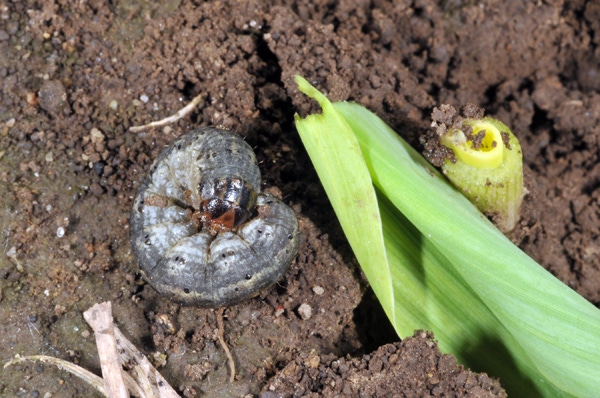June 7, 2011

Multiple species of cutworms are abundant in Indiana cornfields right now, and John Obermeyer, a Purdue Extension entomologist says Bt traits and seed-applied insecticides are providing only suppression of the insects – not control.
Obermeyer has received numerous reports of emerging corn that has been damaged by cutworms and he says growers need to be scouting their fields – especially the newly emerging corn – to determine if rescue foliar insecticides are necessary.
"Black cutworm is not the only species of cutworm present and damaging fields," Obermeyer says. "We've received many reports of claybacked cutworm, as well. This species overwinters as a partially grown larva, so it is larger when corn is emerging, as compared with black cutworms, which begin their annual Indiana cycle as eggs in the spring."
Black cutworm is the only species labeled for control on these particular traited-seeds, but larvae ½ in. long or longer are not controlled by Bt proteins. Other species of cutworms also are eating through this built-in protection, leaving rescue treatments the grower's responsibility.
"As we've learned in the past and are hearing again this spring, the seed-applied insecticides provide only suppression of cutworms," Obermeyer says. "They likely do a fine job of suppressing light to moderate infestations, but severe infestations are not controlled – even by the higher rate."
Corn growers may need to apply a control if they find that 3-5% of the seedlings in a field have obvious foliar feeding or plant cutting and live larvae can be found while digging around damaged plants.
Obermeyer says higher label rates of insecticides should be considered if the soil surface is crusty and most of the cutworm activity is below ground.
Purdue Extension's pdf Corn Insect Control Recommendations - 2011 offers a list of foliar fungicides for rescue control. More information about cutworms is available in the Purdue Extension Pest and Crop Newsletter.
You May Also Like




